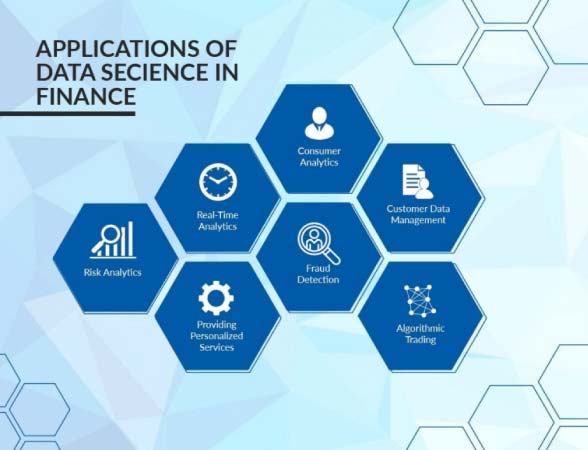Data Science Is Helping Financial Services Find Hidden Opportunities
Banks are trying to keep up with fintech companies that pursue a more product-oriented approach to implementing AI and selling AI-enabled offerings Turkey’s third-largest private bank, Yapı Kredi, recently automated its customer care, operations, and consumer credit departments utilising RPA. Previously, agents would need to manually gather information from different systems and sources to address […]
Topics
What to Read Next
- Vonage Launches Vonage Conversations for Agentforce Marketing
- SymphonyAI Launches Next-Generation CINDE Merchandising Agents
- MediaMint Partners with Spotify to Scale Global Advertising Growth
- Manus Collaborates with Similarweb to Give AI Agents Digital Marketing Insight
- Amplitude Acquires InfiniGrow to Bring Revenue Analytics to Marketers

Banks are trying to keep up with fintech companies that pursue a more product-oriented approach to implementing AI and selling AI-enabled offerings
Turkey’s third-largest private bank, Yapı Kredi, recently automated its customer care, operations, and consumer credit departments utilising RPA. Previously, agents would need to manually gather information from different systems and sources to address a customer query. But now, robots automatically pull together relevant information in one place.
There’s a massive shift in the banking customers’ mindsets worldwide. The customer’s rising expectations now require banks to provide next-gen online services for their convenience; they expect customer-centric systems to be available round the clock. To deliver such a level of experience, financial services must have constant access to big data and processing capabilities.
The Ascent surveyed over 1,700 consumers with a bank account to find out what they want from banks. From the same, it was found that the most critical features consumers want from a bank are high-quality customer service, low fees, security and fraud protection, and mobile and online access.
Automation and artificial intelligence, already an important part of consumer banking, will penetrate operations far more deeply in the coming years, delivering benefits not only for a bank’s cost structure but for its customers. Same for call centres. Instead of waiting on hold or being pinballed between different representatives, customers could get instant, efficient automated customer service powered by advanced AI.
AI and advanced analytics could also improve dispute resolution. Customers can contact their bank any time through the internet, mobile, or email channels and receive quick, real-time decisions. On the back end, systems would perform almost instant data evaluation about the dispute, surveying the customer’s history with the bank and leveraging historical dispute patterns to resolve the issue.
Data science has developed rapidly and has given birth to a new age for financial tasks. More companies are inculcating this innovative technology, as it aids in more than just incremental gains. It enhances revenue breakthroughs by identifying hidden opportunities within data that can directly impact the bottom line. Today, the sector is reshaping its strategies and methods, with fintech companies pursuing a more product-oriented approach to implementing AI and selling AI-enabled offerings.
Data science and the financial landscape
While innovation within the financial sector is not a new concept, the focus on future technologies has seen a significant increase. Fintech solutions that use Big Data analytics, AI and blockchain technologies are being introduced rapidly. Thereby creating opportunities to offer more inclusive access to financial services.
While the traditional analytics approach in finance and banking was to generate reports and dashboards, today’s banks and financial institutions use data science and analytics more purposefully. Data analytics in the finance and banking sector is mainly used in demand, supply and risk management – to keep track of security aspects with a predictive approach. Using AI models can resolve issues that non-technical executives deal with, like customer experience and retention, underwriting contracts, and claims management. More specifically, inculcating data science in the financial services and banking industry can help grow and modernise future decisions by using banking analytics and gaining insight into their market competitors.
It can also help the investment advisor team to understand how current events change the market outlook. With a no-code AI application, non-technical professionals in finance can run AI and NLP models to analyse large amounts of unstructured data and understand the sentiment behind the information. Users can specifically look at current mergers, acquisitions, macroeconomics, and legal actions to better understand how the events impact different industries and companies.

Image Source: ODSC
The data science advantage
Using the analytical and automation benefits of AI and NLP, manual research time can be shortened for investment decisions in real-time. Enterprises are also implementing automatic responses via AI chatbots, filtering and sorting content and documents (both internal and external) to determine the next best steps for customer services.
Much like the example of Yapi Kredi, RPA technology helps banks with several regulations, especially making controls, reconciliations during the night, raising flags, and pointing out suspect transactions.
Data scientists and machine learning engineers at Citibank use specific pipelines that the company claims have traditionally favoured high-performance. Data is at the heart of financial modelling, and by exploring data sets and identifying relationships, valuable data can be generated. Fine-tuned parameters and hyperparameters can help validate AI models, creating desired performance metrics for better banking instances.
One of the sector’s biggest hurdles today is maintaining massive clusters of data security while addressing privacy concerns. The challenge now is developing systems consumers trust enough to provide information freely. As new data laws are passed, consumers too are gaining more power over their data, and every growing challenge is now being paid attention to by many institutions.
Banks are still looking for more ways to make better decision-making, using data to offer more personalised services. As more data in the financial industry is exposed, banks seem to be shifting to self-service technologies that directly impact consumers. There is a vast amount of data, and for now, machine learning and AI tools are the only ways to help keep it in check.
According to an Accenture report, trust in financial institutions is going down as well — only 29 per cent of people trust their banks to look after their long-term financial wellbeing, compared with 43 per cent two years ago. This means you need to do a lot more to keep customers happy.
If you liked reading this, you might like our other stories
Banking On Hyper-Personalisation
Martech Learning: Courses for the C-suite









































































































